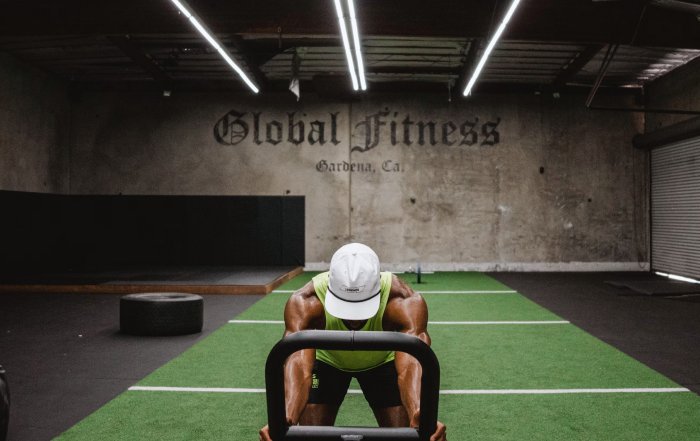In the dense and dynamic architecture of modern cities, where time has become the most valuable and elusive commodity, micro-workouts have emerged as a compelling solution for individuals seeking to maintain physical and mental well-being amid increasing professional, environmental and societal pressures. As urban centers worldwide—from the United States and Canada to Germany, Singapore, South Korea and beyond—continue to evolve into ecosystems defined by relentless mobility, digital acceleration and shifting work structures, the concept of short, strategically designed bouts of exercise has transitioned from trend status to a fundamental component of contemporary wellness culture. This transformation reflects not only advancements in exercise science but also a recognition that traditional long-form fitness routines often fail to align with the patterns of modern metropolitan life. For readers of FitPulseNews, whose interests span health, fitness, business, culture and global innovation, micro-workouts represent a compelling intersection of evidence-based practice, human performance research and lifestyle feasibility.
Urbanization continues to intensify, with more than 60 percent of the world’s population expected to live in cities by 2030, according to analyses from global research institutions such as the United Nations. As cities expand, so do challenges related to sedentary behaviors, occupational burnout, rising environmental stressors and the disproportionate prevalence of chronic lifestyle-related illnesses. These realities underscore the necessity for accessible activity strategies that integrate seamlessly into daily routines rather than compete with them. Micro-workouts—brief, focused sessions lasting between one and ten minutes—address this need by eliminating barriers to entry while promoting consistent movement throughout the day. Their emergence has been supported by extensive scientific research, including studies from organizations like the American College of Sports Medicine, demonstrating that short-duration, high-intensity or moderate-intensity exercise performed intermittently can offer benefits comparable to longer workouts, particularly when accumulated over time.
This evolution of exercise philosophy is also reinforced by the changing structures of work. Companies across the United States, Europe, Australia, Singapore and Japan have increasingly adopted hybrid or fully remote arrangements, creating both new opportunities and new health risks. The flexibility of remote work has allowed individuals to reimagine their daily movement, but it has also intensified concerns regarding prolonged sitting, digital fatigue and a decline in incidental activity. Micro-workouts—and the movement-friendly cultures that support them—have therefore become essential tools for maintaining not only physical fitness but also productivity and cognitive resilience. Readers interested in broader workplace and economic contexts can explore these themes through FitPulseNews business reporting at fitpulsenews.com/business.html.
Cities such as London, New York, Berlin, Toronto and Sydney have become laboratories for adopting micro-workout principles, integrating them into corporate wellness initiatives, public health strategies and community fitness programming. These cities, recognized for their emphasis on innovation and livability, have helped propel micro-workouts into mainstream discourse. Urban health advocates increasingly view these short exercise sessions as mechanisms for counteracting the “activity scarcity” embedded in dense metropolitan environments, where public space constraints, long commutes and congested schedules often reduce opportunities for traditional gym-based routines.
From a global perspective, micro-workouts have become particularly relevant in regions where technological innovation intersects with strong wellness cultures. Singapore’s leadership in smart urban planning, Japan’s long-standing commitment to public health, South Korea’s digital fitness ecosystem and the Scandinavian nations’ emphasis on movement-friendly living environments collectively reflect an international momentum toward embedding brief, accessible physical activity into daily life. Readers following broader global wellness developments can explore related coverage at fitpulsenews.com/world.html.
The Science Behind Micro-Workouts and Their Impact on Health
The scientific foundation supporting micro-workouts has grown increasingly robust, driven by advancements in exercise physiology, public health research and behavioral psychology. One of the most significant findings is that the body responds not merely to exercise duration but to exercise intensity, frequency and cumulative load. Research published through institutions such as the National Institutes of Health has demonstrated that multiple short bouts of activity dispersed throughout the day can meaningfully improve cardiovascular health, insulin sensitivity, muscular strength and metabolic function. These findings challenge conventional assumptions surrounding the necessity of prolonged exercise sessions and highlight the importance of movement distribution in mitigating the risks associated with sedentary lifestyles.
Micro-workouts are particularly valuable in addressing the metabolic consequences of inactivity, a critical concern in urban environments where individuals often spend extended periods seated during work, commuting or leisure activities. Research from global health authorities such as the World Health Organization indicates that prolonged sitting significantly increases the risk of obesity, cardiovascular disease, type 2 diabetes and certain cancers, even among individuals who meet traditional exercise guidelines. Short, intermittent bouts of movement—including climbing stairs, dynamic stretching, mobility routines or high-intensity micro-circuits—help counteract these risks by activating large muscle groups, improving circulation and stimulating metabolic processes essential for long-term well-being.
In addition to physical benefits, micro-workouts provide meaningful cognitive and psychological advantages, a factor especially valuable for urban professionals navigating high-stress work environments. Studies from leading institutions such as Harvard Health have shown that brief bursts of physical activity can improve focus, memory, emotional regulation and stress resilience by elevating neurotransmitters such as dopamine, serotonin and norepinephrine. This neurological response makes micro-workouts a strategic intervention for enhancing productivity and reducing burnout, particularly in industries characterized by intense cognitive demands and long work hours.
For readers seeking insights into the relationship between fitness and mental health, additional perspectives are available through FitPulseNews wellness reporting at fitpulsenews.com/wellness.html.
The scientific consensus supporting micro-workouts also aligns with broader movement patterns observed in sports performance, occupational health and environmental health research. Professional athletes and trainers increasingly recognize the value of “mini-sessions” for skill reinforcement, mobility maintenance and recovery enhancement. Organizations such as Nike, Under Armour and Adidas continue to incorporate short-format training sessions into their digital platforms, acknowledging that accessibility and consistency are crucial drivers of long-term adherence. Likewise, global companies in the technology and finance sectors have implemented movement breaks and micro-workout stations within offices, emphasizing their role in employee performance, satisfaction and retention.
Readers interested in sports science developments can find additional coverage at fitpulsenews.com/sports.html.
Micro-Workout Knowledge Quiz
Test your understanding of urban fitness revolution
Micro-Workouts and Their Role in Urban Public Health Strategies
Urban public health officials in cities across Europe, Asia, North America and Australia increasingly view micro-workouts as strategic tools for improving population health outcomes. As chronic lifestyle-related diseases escalate across global metropolitan regions—largely fueled by sedentary behaviors, poor air quality, high stress levels and limited access to equitable wellness resources—short bouts of physical activity offer a scalable, inclusive and cost-effective intervention.
Cities such as Copenhagen, Singapore, Vancouver and Tokyo have led the implementation of wellness-oriented urban planning initiatives that integrate movement into daily life through active transport systems, public exercise stations and workplace wellness programs. Micro-workouts complement these efforts by addressing the reality that many urban residents, particularly those in high-demand professions, still struggle to dedicate extended blocks of time to structured exercise.
The connection between micro-workouts and environmental health has also become more prominent, especially as global cities confront air pollution, climate stress and the health implications of extreme weather. Organizations like the Environmental Protection Agency have emphasized the importance of maintaining indoor movement routines on days when outdoor activity may pose respiratory risks. The accessibility of micro-workouts makes them particularly suitable for populations affected by environmental disruptions, offering consistent opportunities for movement regardless of external conditions. Readers can explore additional environmental coverage at fitpulsenews.com/environment.html.
Technology, Innovation and the Future of Micro-Workout Integration in Urban Life
The expansion of micro-workouts within modern cities has been accelerated significantly by the evolution of fitness technology, smart infrastructure and digital ecosystems that support personalized and adaptable wellness experiences. By 2025, cities across North America, Europe, Asia and Australia have witnessed the proliferation of connected devices, intelligent workout platforms, AI-driven health applications and innovative corporate wellness tools that transform how individuals approach daily activity. The rapid adoption of wearable technology from organizations such as Apple, Garmin and Samsung has played a central role in this transformation.
In addition to wearable tech, digital fitness platforms such as Peloton, ClassPass and Fitbit have expanded their ecosystems to include micro-workout classes, mobility sessions and workplace-friendly exercise formats. Meanwhile, AI-powered platforms continue to personalize recommendations, track behavioral patterns and enhance long-term adherence, a trend covered often in FitPulseNews technology reporting at fitpulsenews.com/technology.html.
Smart urban infrastructure—featuring stairwell lighting, rooftop workout pods and movement-friendly office spaces—supports these emerging habits. Reports from the World Economic Forum illustrate how smart-city technologies increasingly integrate physical activity into everyday life, reinforcing micro-workout adoption across societies.
Hybrid work environments have further accelerated this evolution, with companies around the world using micro-workouts to reduce burnout and improve performance. Readers following workplace shifts can explore additional context via FitPulseNews jobs and industry insights at fitpulsenews.com/jobs.html.
Micro-Workouts as Cultural Catalysts in Global Cities
The cultural impact of micro-workouts extends beyond fitness trends to influence how urban communities engage with health, identity and social connection. In cities such as London, New York, Paris, Tokyo and Toronto, micro-workouts have become embedded in workplace rituals, commuter habits, youth activities and social wellness events. Brands like Lululemon, Reebok, Puma and Equinox invest heavily in short-form movement activations that resonate with global urban culture. Readers can explore deeper connections between wellness and lifestyle in FitPulseNews culture reporting at fitpulsenews.com/culture.html.
Micro-workouts have also become tools for mental balance in high-pressure environments, especially in global financial centers, technology hubs and media capitals. As burnout reaches critical levels worldwide, micro-workouts serve as stabilizing anchors that enhance resilience without demanding significant time investments.
Economic Implications of Micro-Workout Adoption Across Global Markets
The rise of micro-workouts has produced far-reaching economic effects across fitness, healthcare, real estate, technology, retail and hospitality sectors. Companies like Apple, Peloton, Whoop, Tonal and Hydrow continue to expand micro-workout-focused platforms. Real estate developers in cities such as Frankfurt, Singapore and Toronto integrate compact fitness spaces to attract tenants. Hotels worldwide now offer micro-workout amenities tailored for business travelers.
Governments and public health agencies advocate micro-workouts as cost-saving tools in preventive health strategies, particularly across Europe, Canada and Australia. Readers interested in health policy can explore relevant reporting through FitPulseNews at fitpulsenews.com/health.html.
Micro-Workouts and the Future of Equitable Wellness Access
Micro-workouts serve as democratizing forces in global health, offering accessible fitness solutions that require little time, equipment or space. Organizations such as the Centers for Disease Control and Prevention and Public Health England promote micro-activity to reduce disparities in underserved communities.
Grassroots community programs in Nairobi, Bangkok, Mumbai and Buenos Aires incorporate micro-workouts into broader health education efforts, paralleling insights found in FitPulseNews culture and environment reporting at fitpulsenews.com/culture.html and fitpulsenews.com/environment.html.
Micro-workouts also support aging populations, particularly in Japan, Italy and France, where mobility-focused routines help maintain independence and quality of life.
Sustainability, Urban Ecology and the Environmental Value of Micro-Workouts
Micro-workouts represent a uniquely sustainable model of fitness, reducing reliance on high-energy gym facilities and minimizing carbon footprints associated with travel, equipment manufacturing and resource consumption. Environmental bodies such as the International Energy Agency and ICLEI promote programs that integrate movement with sustainable urban planning.
Architects incorporate micro-movement zones into residential and commercial properties to create healthier, more environmentally conscious living environments. Readers can explore sustainability reporting further via FitPulseNews at fitpulsenews.com/sustainability.html.
Social Media, Digital Influence and the Virality of Micro-Movement
Social platforms such as Instagram, TikTok, YouTube and LinkedIn have accelerated global adoption of micro-workouts. Influencers and health professionals around the world create short-form exercise tutorials that make fitness approachable and culturally relevant. Public health agencies often collaborate with content creators to disseminate micro-movement routines during crises or environmental disruptions.
Brands increasingly incorporate micro-workouts into digital campaigns, retail experiences and community events. Coverage of evolving brand strategies is available on FitPulseNews at fitpulsenews.com/brands.html.
Micro-Workouts, Human Performance and the Evolution of Athletic Training
Elite sports organizations—including Manchester City FC, FC Bayern Munich, Toronto Raptors and San Francisco Giants—use micro-training sessions to enhance performance, mobility and recovery. Research from the National Strength and Conditioning Association and the International Olympic Committee confirms that short activity bursts support neuromuscular readiness and reduce injury risk across high-performance environments.
Recreational athletes adopt similar routines to complement busy lives, with further insights available from FitPulseNews sports coverage at fitpulsenews.com/sports.html.
Micro-Workouts and Workplace Evolution: Redefining the Future of Productivity
Organizations worldwide recognize the measurable impact of micro-workouts on cognitive performance, emotional regulation and productivity. Research highlighted in MIT Sloan Management Review reinforces that short bursts of movement enhance problem-solving and reduce stress.
Companies such as Google, Microsoft, Deloitte, SAP, Tencent and Accenture embrace micro-workouts as part of human sustainability strategies. For more insights on workplace wellness and economics, readers can visit FitPulseNews at fitpulsenews.com/business.html.
Nutrition, Recovery and the Holistic Integration of Micro-Workouts
Nutritional support—guided by organizations such as the Academy of Nutrition and Dietetics—is essential for maximizing micro-workout benefits. Urban professionals rely on modular eating strategies and hydration practices to maintain energy throughout the day.
Recovery tools from Therabody and Hyperice complement micro-training sessions, while mindfulness and breathwork remain crucial components of holistic wellness. Related insights can be found in FitPulseNews coverage at fitpulsenews.com/nutrition.html and fitpulsenews.com/wellness.html.
Global Outlook: The Next Decade of Micro-Workout Integration
As urbanization accelerates across continents, micro-workouts will continue shaping public health, workplace culture, athletic training, sustainability and digital consumer experiences. Cities will increasingly embed movement prompts into smart infrastructure, while AI and wearable tech will drive personalized activity recommendations.
Consumer demand for efficient wellness practices will reshape markets in the United States, United Kingdom, Germany, China, South Korea, Japan, Singapore, Australia and beyond. Micro-workouts will remain a central pillar of urban resilience and human performance.
Closing: Micro-Workouts as a Defining Feature of the Modern Urban Wellness Landscape
Micro-workouts have redefined how individuals maintain physical and mental well-being within the complexity of global metropolitan environments. Their accessibility, scientific foundation and cultural relevance position them as essential tools for long-term health, productivity and quality of life. As cities evolve, and as lifestyles grow increasingly fast-paced and digitally driven, micro-workouts will remain integral to the new era of wellness—empowering individuals to pursue healthier, more balanced and more resilient futures.
For ongoing coverage of global health, fitness, business, technology, culture and environmental developments, readers can visit FitPulseNews at fitpulsenews.com.










